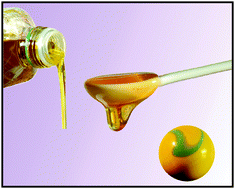Glass transition and phase state of organic compounds: dependency on molecular properties and implications for secondary organic aerosols in the atmosphere
Abstract
Recently, it has been proposed that organic aerosol particles in the atmosphere can exist in an amorphous semi-solid or solid (i.e. glassy) state. In this perspective, we analyse and discuss the formation and properties of amorphous semi-solids and glasses from organic liquids. Based on a systematic survey of a wide range of organic compounds, we present estimates for the glass forming properties of atmospheric secondary organic aerosol (SOA). In particular we investigate the dependence of the glass transition temperature Tg upon various molecular properties such as the compounds' melting temperature, their molar mass, and their atomic oxygen-to-carbon ratios (O : C ratios). Also the effects of


 Please wait while we load your content...
Please wait while we load your content...